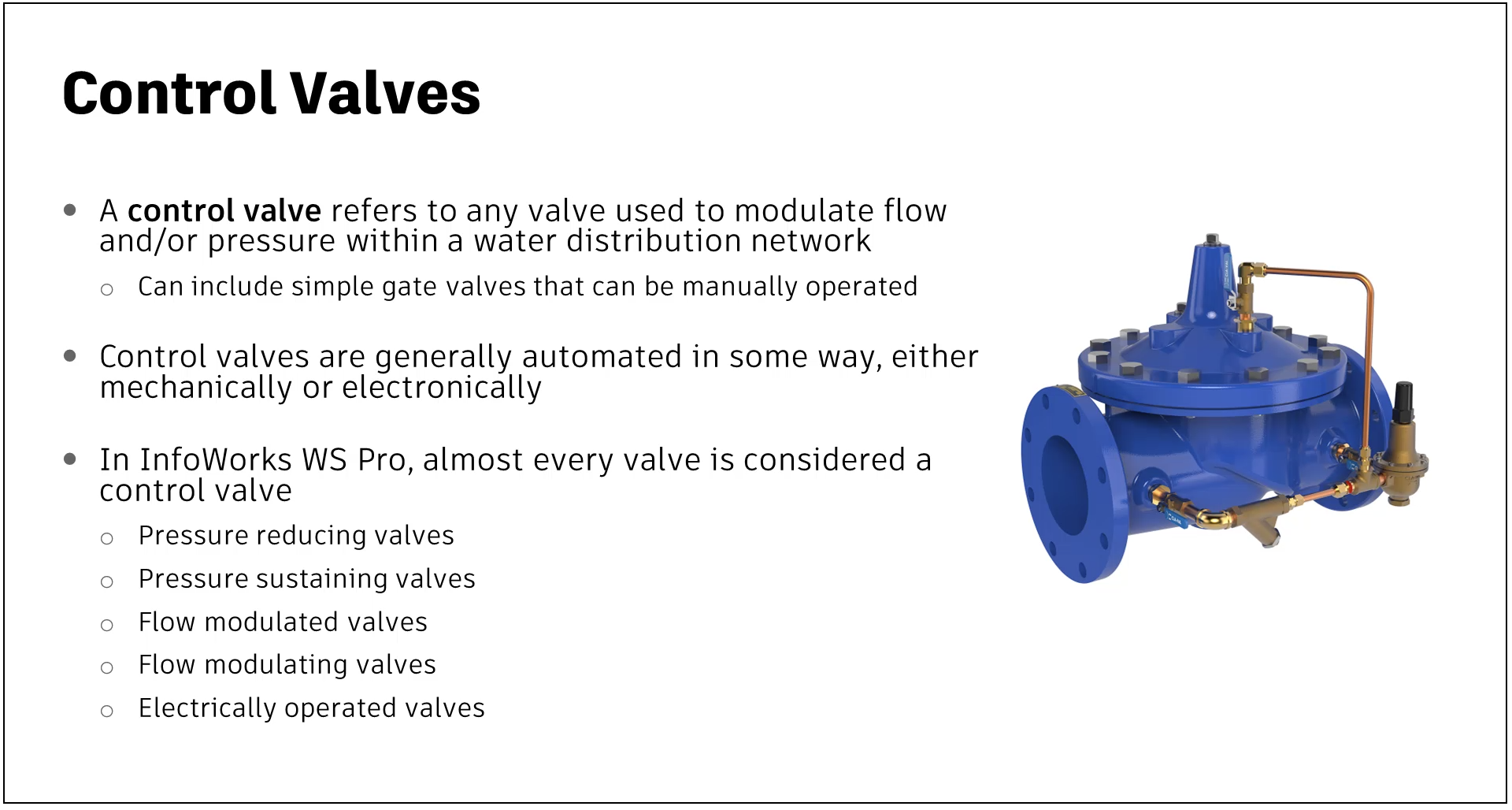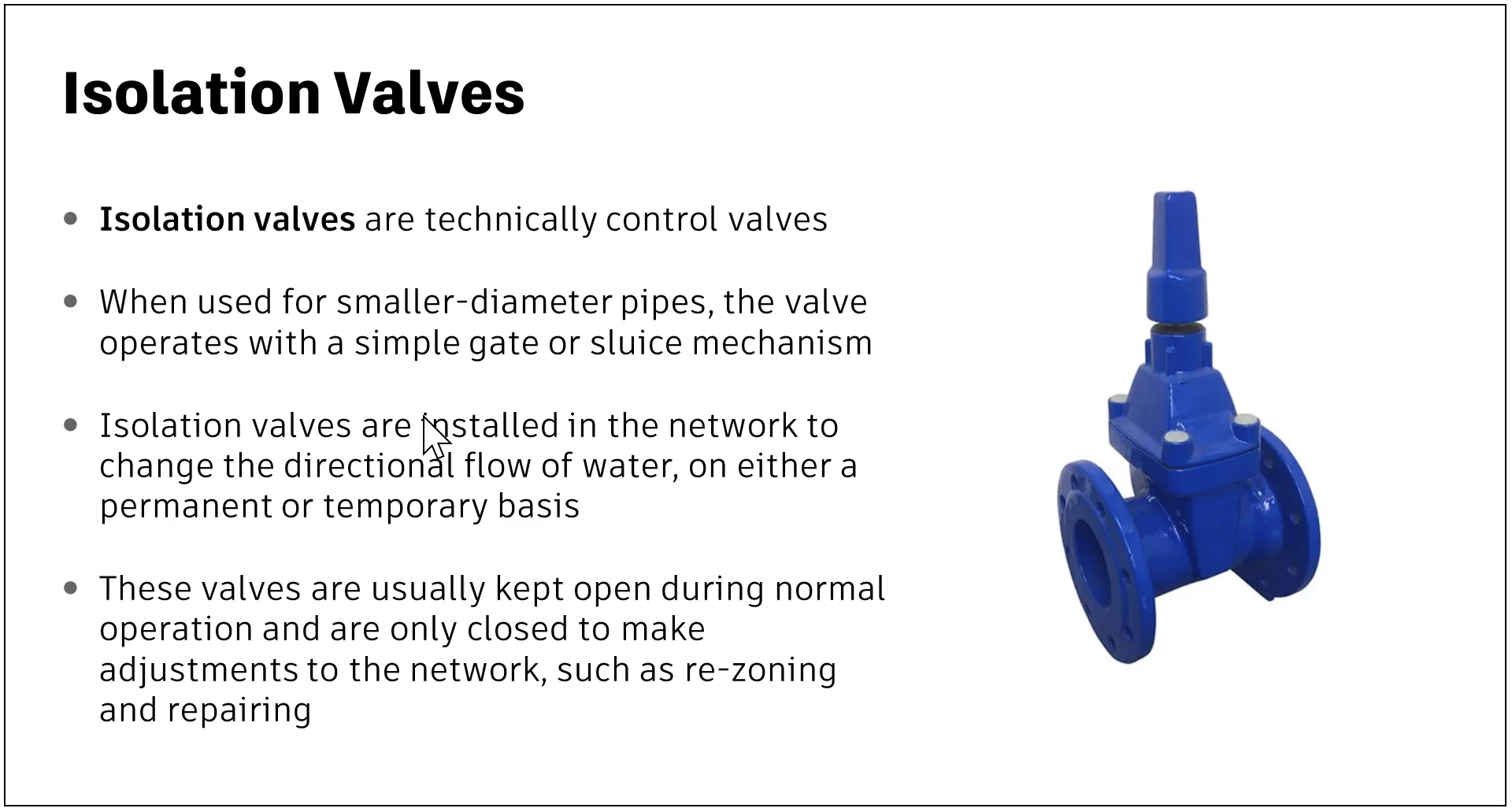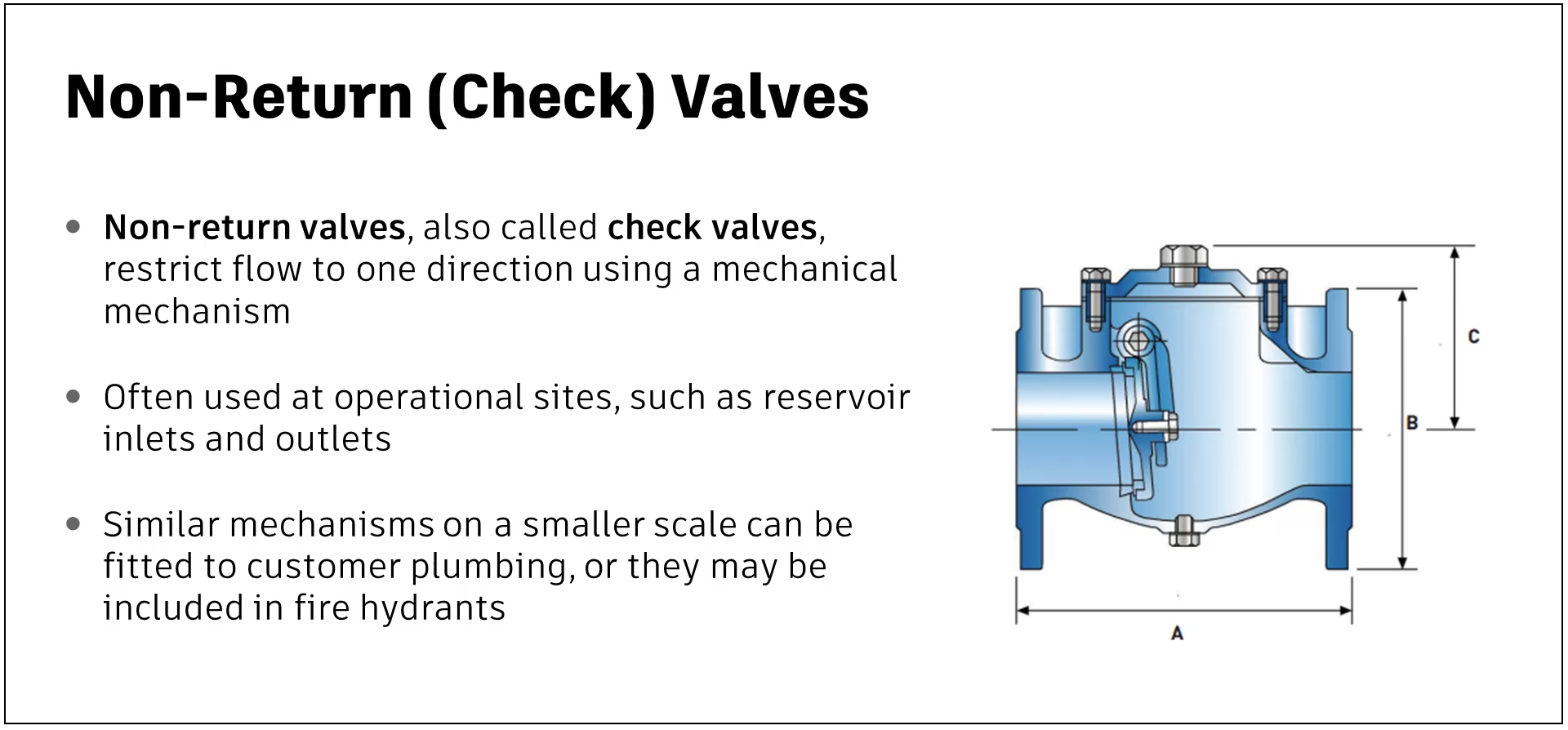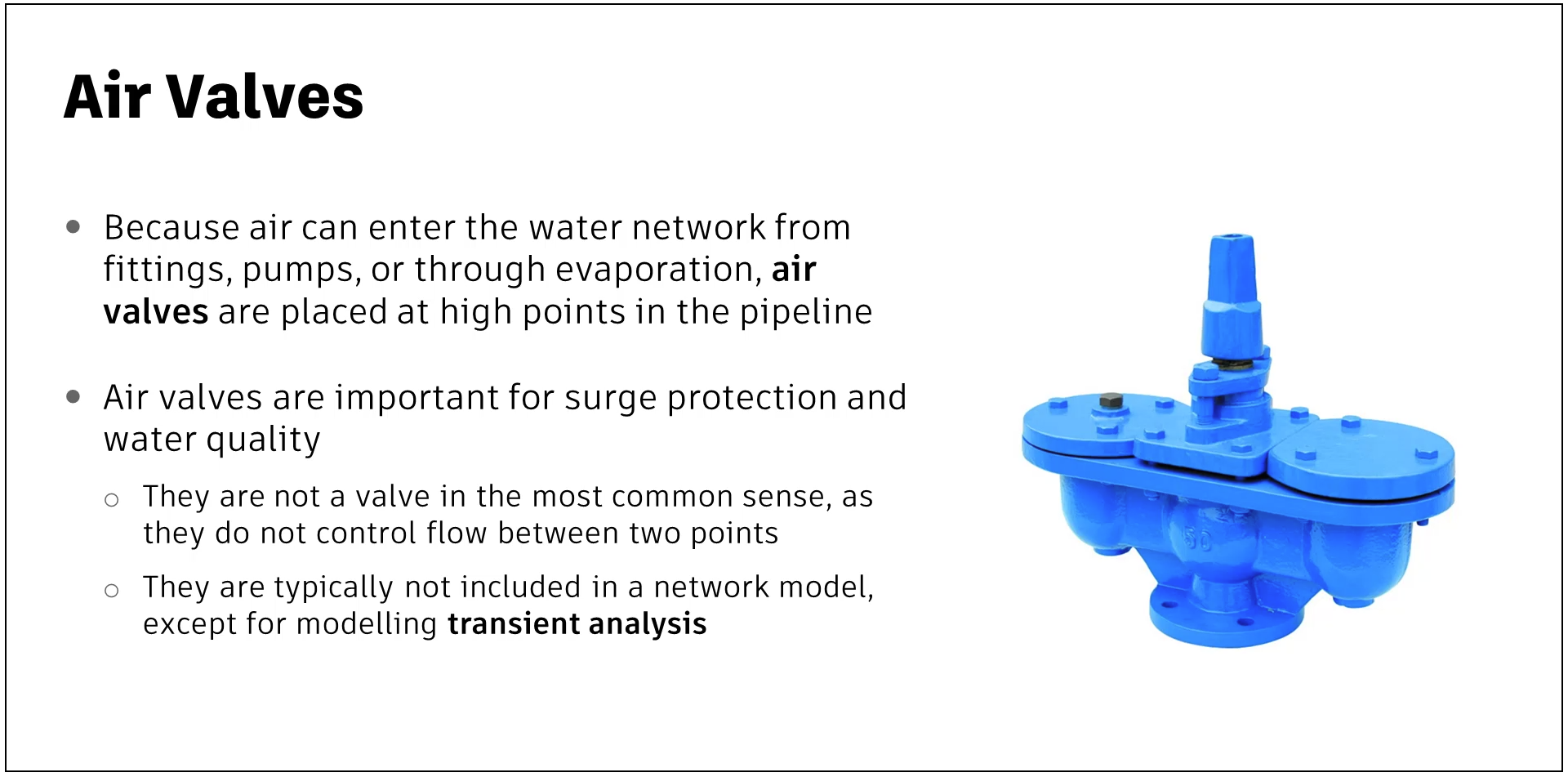Understanding control valves
Identify the basic types of control valves and describe their role in the network model.
A control valve is an essential component of a water network.

The mechanism of a valve can affect pressure loss as the valve opens or closes. Many types of advanced control valves (like PRVs) are globe valves, which are commonly used to regulate the flow in a pipeline.


